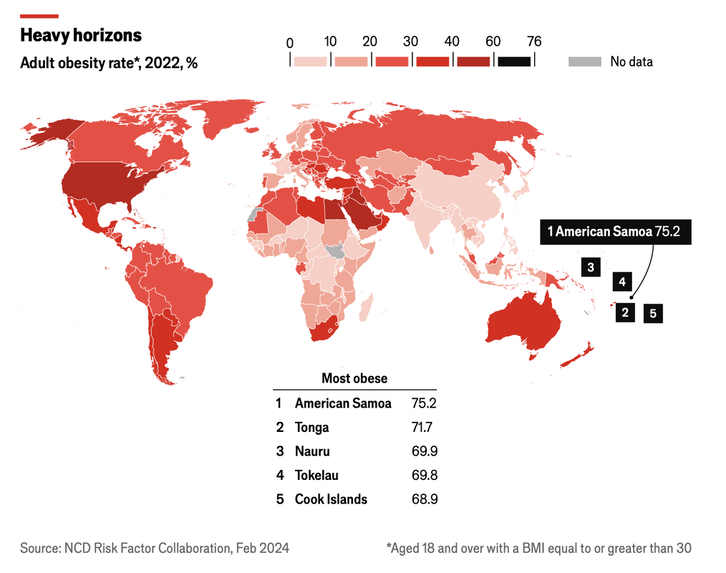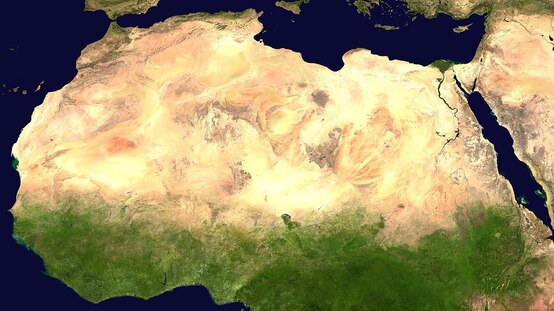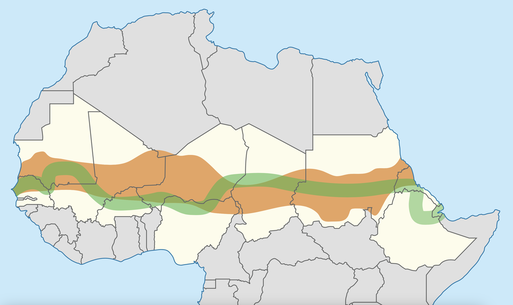NumptyNerd - Our World, Our Geography
|
NumptyNerd is an educational geography resource, rich with revision materials and articles covering a spectrum of topics such as globalisation, climate change, and renewable energy. Curated by Dr. Martin Cox, a Fellow of the Royal Geographical Society, the site delves into the intricacies of global issues and offers insights into geographical concepts with case studies like China's renewable energy advances. It's a valuable tool for students and geography buffs seeking to deepen their understanding of our world's dynamic landscapes. Vertical Divider
|
|
The New Normal: obesity takes root in developing nations.
Obesity is no longer a condition confined to high-income countries; it has become a global phenomenon that is now deeply embedded in the fabric of many low- and middle-income nations as well.
Numpty Nerd: 2 March 2024

The world's nutritional landscape has changed dramatically; recent findings from a major study published in The Lancet provide crucial insights particularly relevant for students of geography. The concurrent rise in obesity rates and persistence of undernutrition have reshaped the contours of global health. This research necessitates an urgent revision of geography textbooks. Let us now examine the geographical implications of this groundbreaking report.
The Global Rise of Obesity
The study in question has meticulously tracked the prevalence of underweight and obesity among adults and school-aged children in 200 countries from 1990 to 2022. The geographical patterns that emerge are stark and deeply concerning; obesity is on an upward trajectory globally, outpacing underweight in most regions.
For geographers, the implications are profound. Obesity is no longer a condition confined to high-income countries; it is a global phenomenon that is now deeply embedded in the fabric of so many low- and middle-income nations as well. The data indicates that island nations in the Caribbean, Polynesia, Micronesia, as well as countries in the Middle East and North Africa, are seeing the highest combined prevalence rates.
A World of Stark Contrasts
The study's findings reveal that the increase in the global obesity burden is primarily driven by rising obesity rates rather than by a decrease in underweight people. However, underweight remains a significant issue in parts of South Asia and Africa, pointing to the complex double burden of malnutrition and obesity these regions face.
When we consider these obesity trends through a geographical lens, they reveal a story of global shifts in dietary patterns, urbanisation, economic processes, and cultural changes. The proliferation of ultra-processed industrial foods, which are often more accessible and affordable than healthier options, coupled with increasingly sedentary lifestyles, has fuelled this surge in obesity.
Diverse Nutritional Landscapes
As we examine the geographical distribution of obesity, we also see the role that policy, infrastructure, and culture play in shaping these outcomes. Urban planning, food subsidies, agricultural policies, and health education vary widely across different regions, creating diverse nutritional landscapes.
For instance, in areas where obesity is rising alongside undernutrition, strategies must balance the promotion of food security with the prevention of excess calorie intake. This might involve enhancing the availability and affordability of nutritious foods while also implementing educational programmes that empower people to resist the influence of global food giants and the promotion of ultra-processed foods.
In Conclusion
The fight against obesity in developing nations is not merely a medical challenge but also a geographical one that interweaves culture, economy, and policy. It is a battle that must be fought on multiple fronts, recognising the interconnectivity of our global community and the toxic food environments to which individuals are exposed. As obesity takes root in these nations, the urgency of holding transnational food corporations to account intensifies. Only by addressing the underlying geographical factors and embracing a holistic approach can we hope to stem the tide of this global health crisis and pave the way towards a healthier future for all.
The Lancet. Worldwide trends in underweight and obesity from 1990 to 2022: a pooled analysis of 3663 population-representative studies with 222 million children, adolescents, and adults. https://doi.org/10.1016/S0140-6736(23)02750-2
The Global Rise of Obesity
The study in question has meticulously tracked the prevalence of underweight and obesity among adults and school-aged children in 200 countries from 1990 to 2022. The geographical patterns that emerge are stark and deeply concerning; obesity is on an upward trajectory globally, outpacing underweight in most regions.
For geographers, the implications are profound. Obesity is no longer a condition confined to high-income countries; it is a global phenomenon that is now deeply embedded in the fabric of so many low- and middle-income nations as well. The data indicates that island nations in the Caribbean, Polynesia, Micronesia, as well as countries in the Middle East and North Africa, are seeing the highest combined prevalence rates.
A World of Stark Contrasts
The study's findings reveal that the increase in the global obesity burden is primarily driven by rising obesity rates rather than by a decrease in underweight people. However, underweight remains a significant issue in parts of South Asia and Africa, pointing to the complex double burden of malnutrition and obesity these regions face.
When we consider these obesity trends through a geographical lens, they reveal a story of global shifts in dietary patterns, urbanisation, economic processes, and cultural changes. The proliferation of ultra-processed industrial foods, which are often more accessible and affordable than healthier options, coupled with increasingly sedentary lifestyles, has fuelled this surge in obesity.
Diverse Nutritional Landscapes
As we examine the geographical distribution of obesity, we also see the role that policy, infrastructure, and culture play in shaping these outcomes. Urban planning, food subsidies, agricultural policies, and health education vary widely across different regions, creating diverse nutritional landscapes.
For instance, in areas where obesity is rising alongside undernutrition, strategies must balance the promotion of food security with the prevention of excess calorie intake. This might involve enhancing the availability and affordability of nutritious foods while also implementing educational programmes that empower people to resist the influence of global food giants and the promotion of ultra-processed foods.
In Conclusion
The fight against obesity in developing nations is not merely a medical challenge but also a geographical one that interweaves culture, economy, and policy. It is a battle that must be fought on multiple fronts, recognising the interconnectivity of our global community and the toxic food environments to which individuals are exposed. As obesity takes root in these nations, the urgency of holding transnational food corporations to account intensifies. Only by addressing the underlying geographical factors and embracing a holistic approach can we hope to stem the tide of this global health crisis and pave the way towards a healthier future for all.
The Lancet. Worldwide trends in underweight and obesity from 1990 to 2022: a pooled analysis of 3663 population-representative studies with 222 million children, adolescents, and adults. https://doi.org/10.1016/S0140-6736(23)02750-2
The Great Green Wall: managing desertification
This hope-infused video will lift your spirits with its inspiring update on positive environmental changes happening across Africa.
Updated: 25 February 2024
Andrew Millison's engagement with the Great Green Wall of Africa imparts valuable insights into sustainable practices that are applicable to geographical studies, particularly in relation to combating desertification. His collaboration with the UN World Food Programme on the northern border of Senegal leverages his permaculture expertise and provides a practical perspective on land restoration projects focused on rainwater harvesting, food security, and ecosystem restoration within the Great Green Wall initiative.
|
The Great Green Wall and Desertification
The Great Green Wall Initiative is a proactive response to the urgent challenge of desertification, a critical focus within environmental geography. Desertification refers to the degradation of land in arid, semi-arid, and dry sub-humid areas, mainly due to climatic changes and human impact. The goal of the initiative to counter the expansion of the Sahara Desert involves creating a mosaic of green and productive landscapes, directly confronting this issue. Sustainable Land Management (SLM) Against Desert Expansion The 'half-moon' water harvesting technique exemplifies a SLM practice instrumental in the fight against desertification. Integrating permaculture with indigenous knowledge, these techniques are pivotal in rehabilitating and managing soils in areas susceptible to desertification. Students of geography study these methods as strategies to combat desertification and evaluate their effectiveness in stabilising soils, enhancing vegetative cover, and revitalising ecosystems. Climate Change, Desertification, and the Great Green Wall The Great Green Wall plays a vital role in mitigating climate change effects, a significant contributor to desertification. As a carbon sink that bolsters landscape resilience, the initiative strives to thwart the advance of deserts. Geographers investigate these actions to comprehend the interplay between reforestation, carbon capture, and climate mitigation. Biodiversity and Ecosystem Stability in Drylands Fostering biodiversity through the reintroduction of native species is a key tactic in maintaining ecosystem stability and combating desertification. The Great Green Wall's efforts align with geographic principles that emphasise preserving biodiversity to guarantee ecosystem services crucial for the well-being of local populations and the prevention of land deterioration. |
Socio-Economic Impacts and the Prevention of Desertification
The socio-economic ramifications of desertification, including heightened urban migration, are of significant interest in human geography. The Great Green Wall intends to forge sustainable livelihoods that bolster the desertification resilience of rural communities. Geography students may examine how enhancing the economic appeal of these areas is fundamental in managing desert expansion and population dynamics. Conclusion The Great Green Wall Initiative symbolises a significant geographical intervention against the acute problem of desertification. It merges sustainable land management, climate change abatement, biodiversity preservation, and socio-economic progress to forge a living barrier resisting desert encroachment. |
Holding the line - the boundary between desert and farmland
Compare the NASA satellite image with the map which shows the Sahel region (brown), the Great Green Wall (green), and participating countries (white)
Credit: NASA and Sevgart - Own work, CC BY-SA 4.0, https://commons.wikimedia.org/w/index.php?curid=98582280
Credit: NASA and Sevgart - Own work, CC BY-SA 4.0, https://commons.wikimedia.org/w/index.php?curid=98582280
For students of geography, this YouTube video offers an uplifting case study to dissect the complex approach needed to manage and thwart desertification. It is essential viewing for students who need the latest on Fragile Environments, desertification and managing the effects of climate change.
Vertical Divider
The Amazon on the Brink
Navigating the Future of Earth’s Most Biodiverse Forest
Updated: 15 February 2024
 Photo by Justin Clark on Unsplash
Photo by Justin Clark on Unsplash
The Amazon Rainforest, often referred to as the planet's lungs, stands at a precarious threshold, edging closer to a tipping point that could trigger a large-scale ecological transformation. This disturbing prognosis, detailed in a recent issue of the journal Nature (February 2024), resonates with a dire warning for geographers: our planet's most vibrant bastion of biodiversity is under siege, and its decline could unravel the complex tapestry of global climate and ecological stability.
The Resilience of the Amazon
For over 65 million years, the Amazon forest has weathered the ebb and flow of planetary climate shifts. Its resilience has been remarkable, but today's challenges are of an unprecedented nature. The Amazon is buckling under the compounded pressures of climate change and anthropogenic disturbances.
Fragile Environments at a Crossroads
Geographically, the Amazon is a region of superlatives: sprawling over millions of square kilometres, it harbours the richest array of life on Earth. Yet, its environmental stability is fragile, threatened by a potent combination of factors that jeopardise its very existence.
Climate Change and Water Stress: Five critical drivers have been pinpointed as architects of water stress within the forest: global warming, fluctuations in annual rainfall, changes in rainfall seasonality, increasing dry season lengths, and rampant deforestation. The forest's ability to sustain its ecological functions is being undermined by these escalating threats.
Disturbing Trends and Tipping Points: Satellite data paints a grim picture, revealing a basin subjected to warming and drying trends. Projections suggest that without intervention, thresholds could be breached by 2050, leading to drastic changes in the forest's structure and functions.
Biodiversity at the Edge
The concept of alternative stable states in ecology suggests that once certain thresholds are crossed, ecosystems like the Amazon could shift from forest to savanna. This would not only be a geographical transformation but also an ecological catastrophe, with the loss of species and habitats that are unique to the forest ecosystem.
Potential Trajectories
Researchers have outlined three possible trajectories for the Amazon, which include a degraded forest state, an open-canopy ecosystem, and a transition to a white-sand savanna. Each trajectory would entail the loss of forest cover and a significant shift in the ecological balance of the region.
The Path to Resilience
The study underscores the urgency of establishing safe boundaries for the Amazon's climate and land use. These include limiting global warming to 1.5°C, ensuring annual rainfall does not dip below 1,800mm, and keeping deforestation below 10%. Local conservation efforts must be bolstered by global initiatives to slash greenhouse gas emissions.
The Call to Action
For geographers, the plight of the Amazon is a clarion call to understand and engage with the intricate links between climate change, biodiversity, and the fragility of environments. The study concludes that the future trajectory of the Amazon is not just a matter of ecological interest but a pressing priority for global governance. The decisions we make today will determine whether this invaluable ecological treasure remains robust or crosses into a perilous unknown, with irreversible consequences for the planet.
The Amazon's fate hangs in the balance, and it is incumbent upon us all to advocate and act for its preservation. As geography students, you are uniquely positioned to appreciate the complex interplay of factors at play and to contribute to the discourse and action that can help steer the Amazon away from the brink.
Source: Flores, B.M., Montoya, E., Sakschewski, B. et al. Critical transitions in the Amazon forest system. Nature 626, 555–564 (2024).
doi.org/10.1038/s41586-023-06970-0
The Resilience of the Amazon
For over 65 million years, the Amazon forest has weathered the ebb and flow of planetary climate shifts. Its resilience has been remarkable, but today's challenges are of an unprecedented nature. The Amazon is buckling under the compounded pressures of climate change and anthropogenic disturbances.
Fragile Environments at a Crossroads
Geographically, the Amazon is a region of superlatives: sprawling over millions of square kilometres, it harbours the richest array of life on Earth. Yet, its environmental stability is fragile, threatened by a potent combination of factors that jeopardise its very existence.
Climate Change and Water Stress: Five critical drivers have been pinpointed as architects of water stress within the forest: global warming, fluctuations in annual rainfall, changes in rainfall seasonality, increasing dry season lengths, and rampant deforestation. The forest's ability to sustain its ecological functions is being undermined by these escalating threats.
Disturbing Trends and Tipping Points: Satellite data paints a grim picture, revealing a basin subjected to warming and drying trends. Projections suggest that without intervention, thresholds could be breached by 2050, leading to drastic changes in the forest's structure and functions.
Biodiversity at the Edge
The concept of alternative stable states in ecology suggests that once certain thresholds are crossed, ecosystems like the Amazon could shift from forest to savanna. This would not only be a geographical transformation but also an ecological catastrophe, with the loss of species and habitats that are unique to the forest ecosystem.
Potential Trajectories
Researchers have outlined three possible trajectories for the Amazon, which include a degraded forest state, an open-canopy ecosystem, and a transition to a white-sand savanna. Each trajectory would entail the loss of forest cover and a significant shift in the ecological balance of the region.
The Path to Resilience
The study underscores the urgency of establishing safe boundaries for the Amazon's climate and land use. These include limiting global warming to 1.5°C, ensuring annual rainfall does not dip below 1,800mm, and keeping deforestation below 10%. Local conservation efforts must be bolstered by global initiatives to slash greenhouse gas emissions.
The Call to Action
For geographers, the plight of the Amazon is a clarion call to understand and engage with the intricate links between climate change, biodiversity, and the fragility of environments. The study concludes that the future trajectory of the Amazon is not just a matter of ecological interest but a pressing priority for global governance. The decisions we make today will determine whether this invaluable ecological treasure remains robust or crosses into a perilous unknown, with irreversible consequences for the planet.
The Amazon's fate hangs in the balance, and it is incumbent upon us all to advocate and act for its preservation. As geography students, you are uniquely positioned to appreciate the complex interplay of factors at play and to contribute to the discourse and action that can help steer the Amazon away from the brink.
Source: Flores, B.M., Montoya, E., Sakschewski, B. et al. Critical transitions in the Amazon forest system. Nature 626, 555–564 (2024).
doi.org/10.1038/s41586-023-06970-0
China's Renewable Energy Revolution in the Desert
Updated: February 2024
Solar technology capitalises on the geography of extreme arid environments
|
Under the scorching sun of China's Kubuqi Desert, a renewable energy revolution is unfolding that could reshape global power dynamics. Remote deserts across China are being transformed into hubs for wind and solar energy, reducing reliance on fossil fuels. For countries focused on achieving net zero carbon emissions by 2050, there are important lessons to be learned from China's desert renewables boom.
|
|
At the Kubuqi Renewable Energy Base, vast arrays of solar panels sprawl across an expanse quintuple the size of Singapore, cloaking dunes likely born of desertification—a process that stripped the steppe grasslands of their fertility. These gleaming blue panels capitalise on the desert's solar radiation to produce copious amounts of clean energy. It is predicted that Kubuqi could produce 455 GW electricity, which is close to the total power capacity of India.
The economic landscape is shifting as renewable energy replaces coal and oil. New spatial patterns are emerging as production moves from concentrated deposits of fossil fuels to widespread harvesting of sun and wind. For local people, this brings jobs in construction and opportunities for community development.
On the global stage, China's significant investment in renewables weakens the influence of oil-rich nations. The geopolitical balance of power could shift as energy independence grows. Other countries are taking note, eager to replicate China's success. Oil companies are concerned.
For geographers, Kubuqi offers a case study in the transition to low-carbon living. It demonstrates how clean power generated in remote areas can meet the needs of distant cities through long-distance transmission lines.
China is leading the world, showing us how we can accelerate the adoption of renewables. China's desert power plants exemplify the innovation possible when sustainability becomes a priority. With the climate crisis looming, such ambition is crucial. Renewables today can illuminate the path to a zero-carbon tomorrow.
The economic landscape is shifting as renewable energy replaces coal and oil. New spatial patterns are emerging as production moves from concentrated deposits of fossil fuels to widespread harvesting of sun and wind. For local people, this brings jobs in construction and opportunities for community development.
On the global stage, China's significant investment in renewables weakens the influence of oil-rich nations. The geopolitical balance of power could shift as energy independence grows. Other countries are taking note, eager to replicate China's success. Oil companies are concerned.
For geographers, Kubuqi offers a case study in the transition to low-carbon living. It demonstrates how clean power generated in remote areas can meet the needs of distant cities through long-distance transmission lines.
China is leading the world, showing us how we can accelerate the adoption of renewables. China's desert power plants exemplify the innovation possible when sustainability becomes a priority. With the climate crisis looming, such ambition is crucial. Renewables today can illuminate the path to a zero-carbon tomorrow.
This feature is essential reading for students studying technology in extreme environments. It also has implications for China's emergence as a superpower on the global stage.


